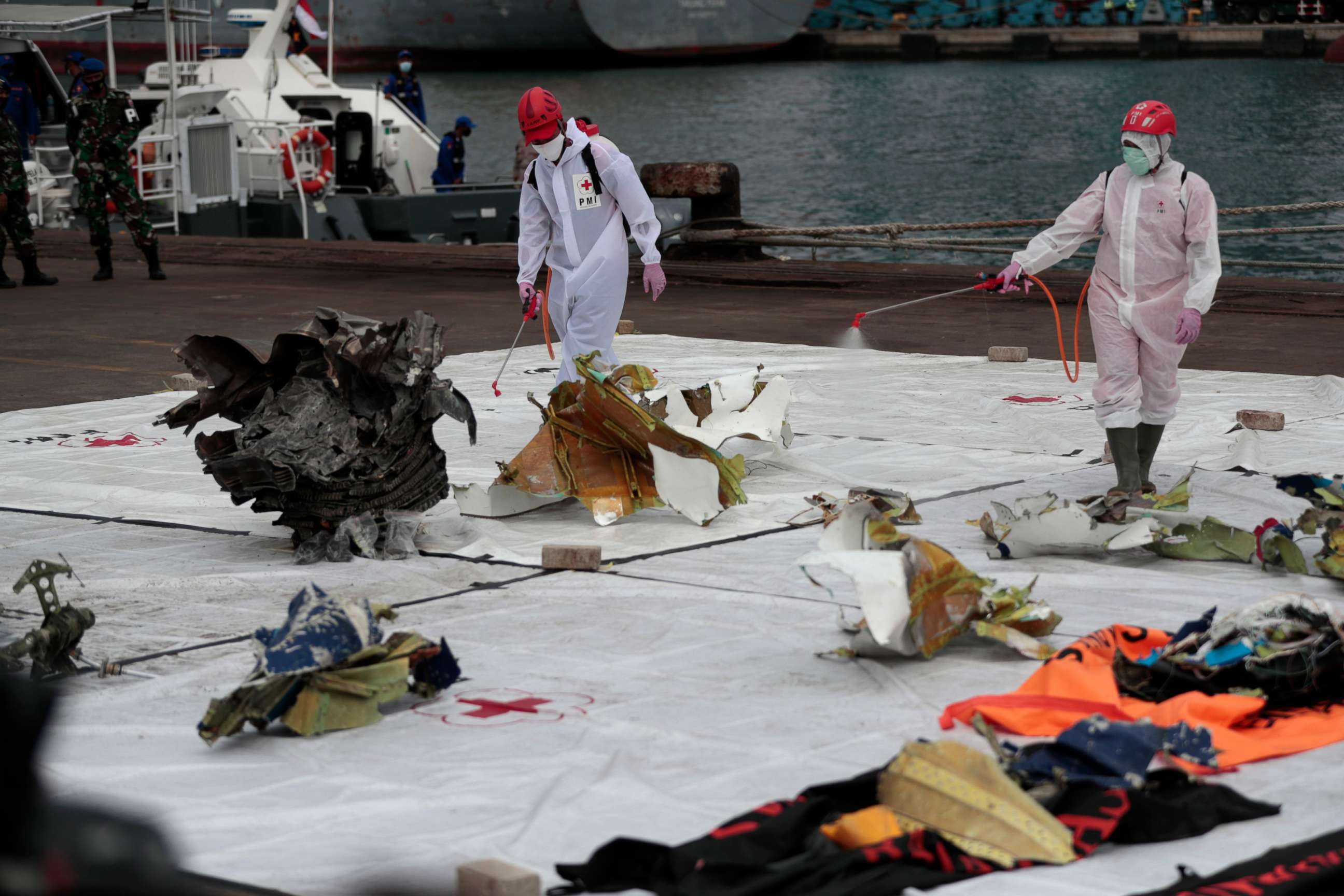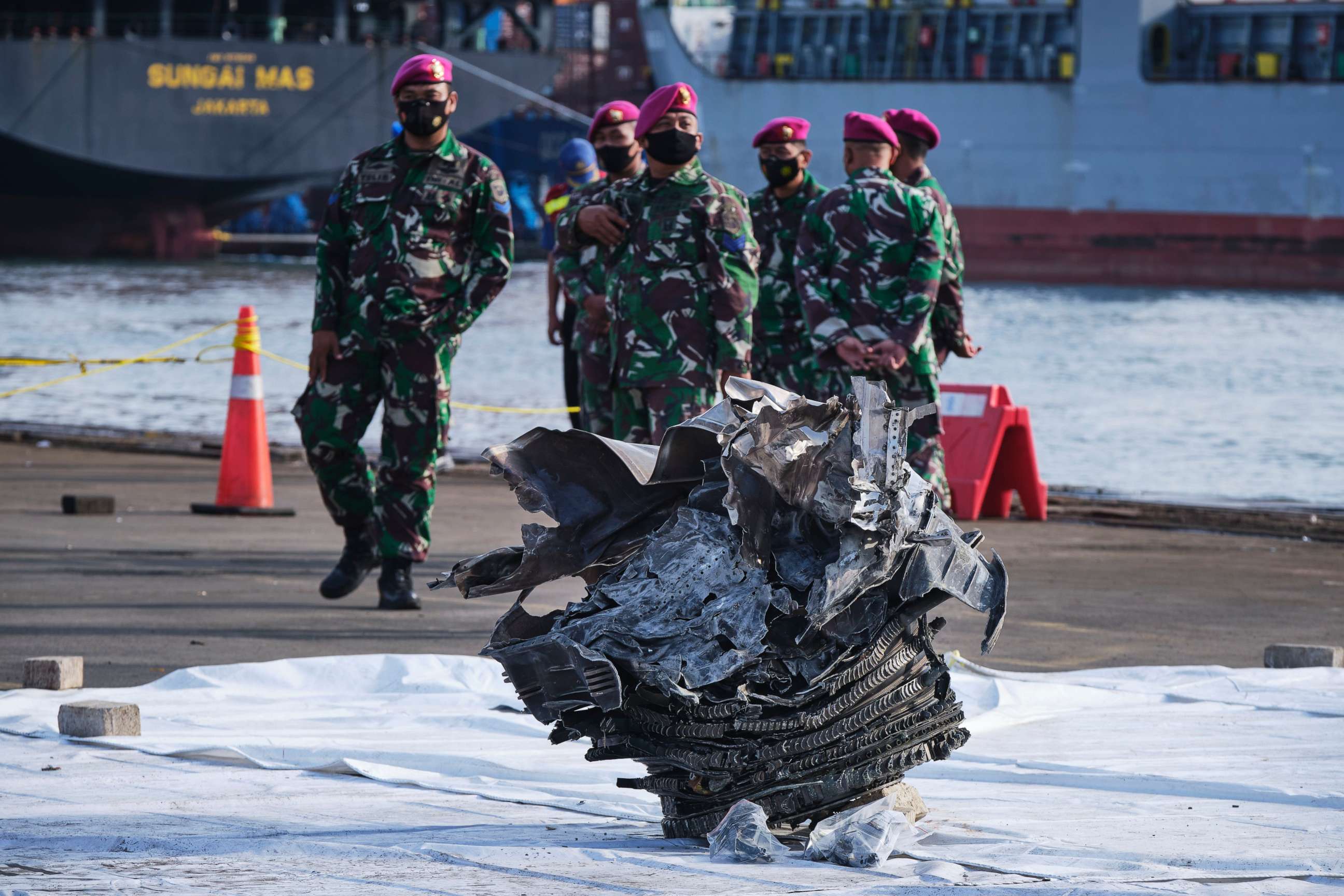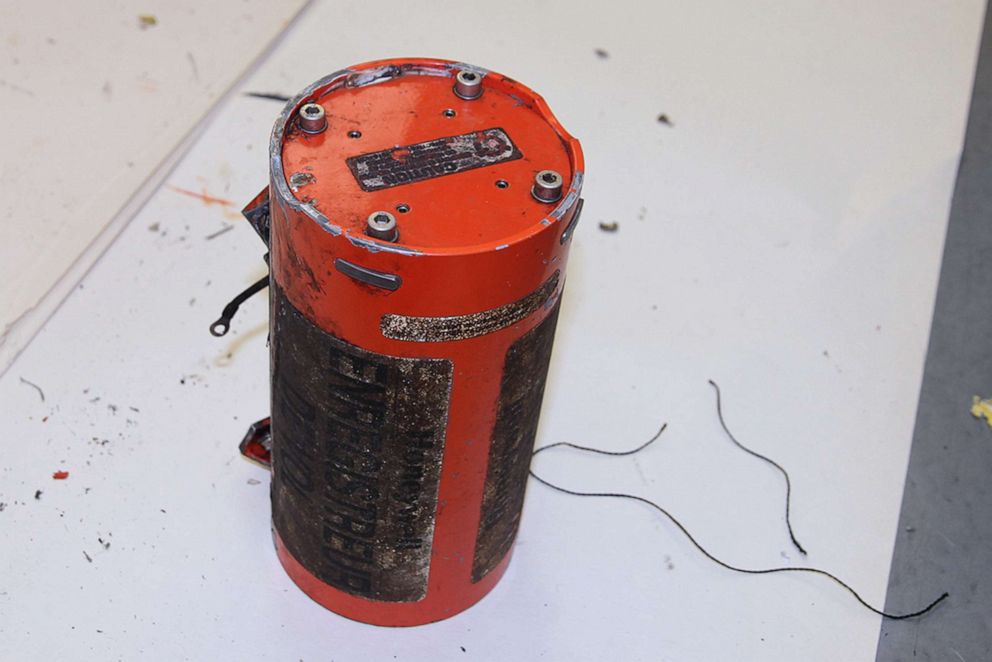Divers recover human remains, debris after doomed flight carrying 62 crashed
They are still scouring the floor of the Java Sea to retrieve the black boxes.
Two days after a 26-year-old Boeing 737 crashed off the coast of Jakarta, Indonesia, divers continue to scour the Java Sea floor in an attempt to retrieve the black boxes from the doomed Sriwijaya Air flight.
Sixty-two people were onboard the plane for an intended one-and-a-half hour flight to Pontianak, but just four minutes after takeoff the jet lost contact with air traffic control.
Indonesia's National Search and Rescue Agency (BASARNAS) confirmed late Sunday it has detected two pings transmitted about 150 to 200 meters apart where the plane crashed, giving dive teams a general search area, but as of Monday afternoon the black boxes have not been found.

The recorders in the black boxes will reveal the largest clues as to what caused the Indonesian jetliner to plummet 10,000 feet in less than a minute -- what the pilots said in the cockpit, all of the movements the plane made, which buttons were pushed, and more.
Almost 4,000 people are working to not only recover the black boxes, but remains of the victims, as well as debris from the aircraft. They’ve deployed 54 ships, three helicopters and underwater remotely operated vehicles.
Search and rescue teams have found body parts, children’s clothes, scraps of metal and engine parts strewn across the sea. Since they started their search, BASARNAS said it has collected a total of 74 body bags, 24 large pieces of aircraft debris and 16 small pieces.

"The search and rescue operation is still continuing in the area now and we ask for support and prayers from Indonesian people so the operation can go smoothly and won't take too long," the head of BASARNAS, Bagus Puruhito, said.
The rescue images are reminiscent of the October 2018 Lion Air Crash when a Boeing 737 MAX crashed in the same sea shortly after taking off from Jakarta. The aircraft in this incident was not a MAX, but a 26-year-old Boeing 737-500.
The Boeing Company released a statement following the incident saying, "We are aware of media reports from Jakarta regarding Sriwijaya Air flight SJ-182. Our thoughts are with the crew, passengers, and their families. We are in contact with our airline customer and stand ready to support them during this difficult time."
The crash on Saturday has renewed scrutiny of Indonesia’s aviation safety record. In the last decade, not including last week’s crash, almost 700 people died in plane crashes in Indonesia.

"Indonesia has probably the worst air traffic safety record in the world," ABC News aviation expert Col. Steve Ganyard said on "Good Morning America." "So the investigators would be looking at all sorts of things, could have been a catastrophic failure, could have been a bomb. Everything is open at this point, but we do know that it was a very precipitous drop."
An Indonesian investigator has reportedly suggested that the tight debris radius suggests the plane may have broken apart when it hit the water instead of exploding in midair.
ABC News' Randy Mulyanto, Karson Yiu, Kirit Radia, Sam Sweeney, and Christine Theodorou contributed to this report.




